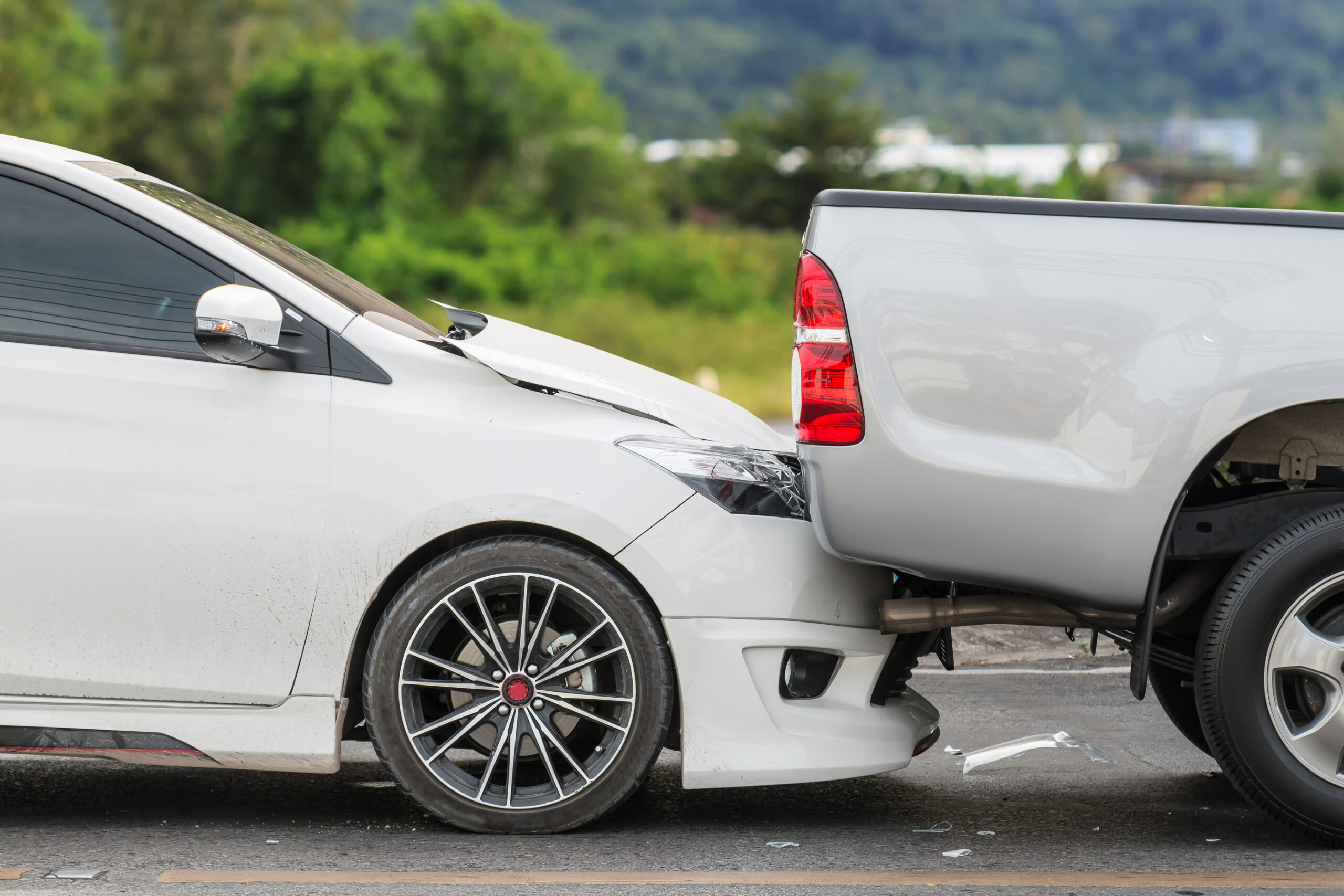Rear-end car accidents are the most common type of collision. Determining who is at fault in a rear-end collision isn’t always as straightforward as you think.
There are many scenarios where liability may not necessarily automatically go to the “following” vehicle. In some cases, liability may go either to the “lead” vehicle, the following vehicle, or both. Of course, if either party involved in a rear-end collision is 51% or more at fault in Texas, they are barred from recovering any of their damages such as medical bills, lost wages, or pain and suffering.
Distracted Drivers and Rear-end Accidents
Rear-end accidents are usually caused by distracted driving, such as texting and driving, or tailgating. The most common types of distracted driving that cause rear-end collisions are smoking, daydreaming, external distractions such as “rubbernecking,” fixing hair or putting on makeup. Proving fault in a rear-end collision involves determining which driver was “negligent.”
To prove negligence in Texas, you must show four things:
- Duty – We all owe each other a duty to exercise reasonable care and drive safely so as not to do anything that will harm any other driver on the road. For example, we all have a duty to pay attention to the car in front of us while we drive in rush hour traffic;
- Breach of Duty – a breach of duty would be failing to exercise reasonable care and not driving safely, such as by failing to pay attention to the car in front of you as it slowed down in rush hour traffic because you were texting and driving;
- Causation – the breach of duty (e.g., failing to pay attention to the road and the driver in front of you) causes the accident; and
- Damages – Damages just mean recognizable and actual losses as the result of the breach in duty. Whiplash or a fractured vertebra in a rear-end collision are great examples of damages. You’ll need to prove damages by providing evidence such as medical bills and lost wages.
How to Prove You Were Not At Fault in a Rear-end Collision
Usually, it’s easy to see why the following vehicle is at fault in most rear-end collisions. However, there are exceptions to this rule. Even if the following vehicle is negligent, it doesn’t always absolve the lead vehicle completely from liability.
The lead vehicle driver may also be driving distracted and may also share some of the liability, proportionate to the amount of their comparative fault.
Ways to prove that the lead vehicle’s driver was at least partially at fault would be to provide evidence that they were driving distracted talking on their phone while driving or looking down at their phone and texting. You may prove this by getting their phone records to show that they were sending or receiving text messages or receiving or making phone calls at the time of the accident.
However, obtaining the other party’s phone records usually involve filing a lawsuit against them first. In addition, having an independent witness who saw the accident and can verify that the lead driver was on their phone or texting, will also help to prove that they at least shared some fault.
When Is a Rear-end Collision Not Your Fault?
Factual scenarios when a rear-end collision is not your fault or at least partially the lead vehicle driver’s fault, include when the lead vehicle:
- Is in reverse and causes the collision.
- Makes an unsafe turn or lane change by not signaling or suddenly changes lanes, cutting off the following vehicle.
- Quickly stops unexpectedly for no apparent reason.
- “Brake checks” the following vehicle.
- Has turn signals, brake lights or taillights that are not functioning.
- Is driving at a significantly slower speed than the speed limit (e.g., driving 25 MPH on the freeway).
- Unsafely pulls out in front of the following vehicle.
Injuries Caused by Rear-end Collisions
Most rear-end collisions involve a very slowing moving or stopped lead vehicle. The impact, even at low speeds can cause significant injuries to the spine, head, and internal organs. The most common types of injuries caused by a rear-end collision are:
- Whiplash;
- Vertebrae fractures;
- Neck pain;
- Shoulder pain;
- Numbness, tingling, and pain in the extremities;
- Muscle, tendon, or ligament sprains, strains, and tears;
- Disc herniation;
- Lower (lumbar) back pain;
- Middle (thoracic) back pain;
- Internal bleeding;
- Traumatic brain injuries, even mild cases that may go undetected through standard testing;
- Concussions;
- Headaches;
- Blurry vision;
- Dizziness; and
- Anxiety / Post-Traumatic Stress Syndrome.
Rear-end Collision Settlements
Rear-end collision settlements are heavily determined on the type of your injuries and medical treatment that you receive. The more serious your injuries, the more likely your settlement will be larger.
With “soft tissue” injuries, or those that involve sprains, strains, and bruises, generally, the settlement value tends to be on the lower side of the settlement spectrum.
Rear-end collisions where there are more serious injuries, such as traumatic brain injuries, broken bones, or those requiring surgery, generally, the greater the settlement amount.
The value of any rear-end collision case relies heavily on the injury severity and the amount of medical bills that have accrued, as a result of the injury.
What’s most important in all rear-end accidents is getting the proper medical treatment as quickly as possible. Without providing proof of your injuries to the insurance company through medical bills and other evidence, the more difficult it will be to be fairly compensated for your injuries.
Let our Houston car accident lawyers help you recover everything you are entitled to under the law. Our legal team is available 24/7. Call us at 855-545-1777.




